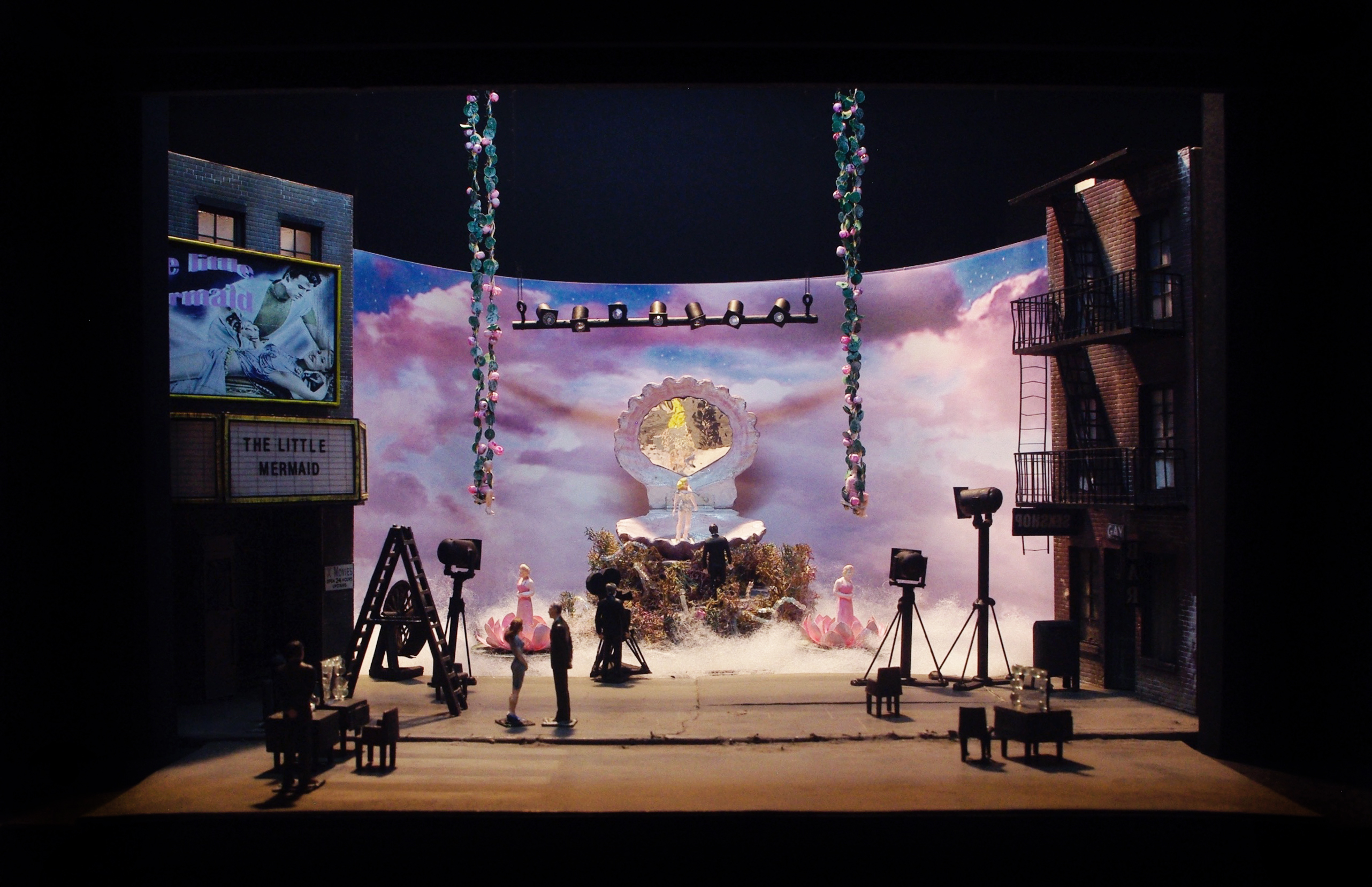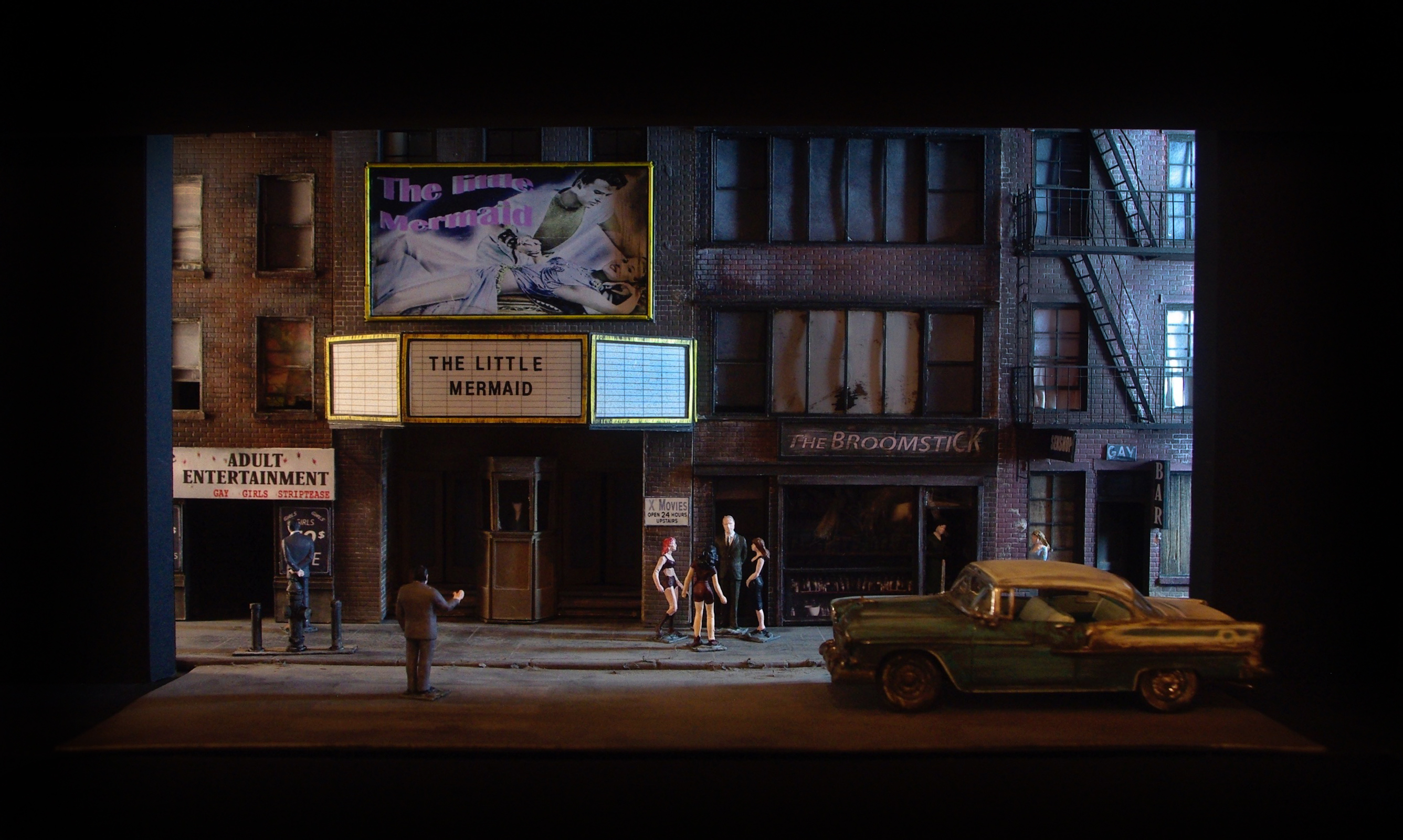
Philipp Stölzl, film and opera director
‘Everything starts for me with the image’
Making his debut at Dutch National Opera, Philipp Stölzl takes on multiple roles, handling not only the direction but also collaborating with Heike Vollmer on set design and managing lighting design. Initially a set designer by trade, Stölzl’s creative process for any production—whether film, theatre, or opera—always starts with envisioning the setting. He seeks to define the essence of the space, asking questions such as, “What kind of environment are we in?” and “What is the appearance of Rusalka’s world?”
Text: Margriet Prinssen
In an interview about his most recent feature film Schachnovelle (2021), Stölzl says he is always looking for a total experience in which all disciplines converge: music, singing, libretto, set, lighting, costumes, and video or film images. “My narrative thinking has to do with space and colour. I spend a lot of time before each production making storyboards, sometimes for weeks or even months. Once I start rehearsing, I don’t follow them to the letter (or even at all), but visually imagining space, time, and action helps me enormously. Sometimes very concretely – how many spaces are there? What do you see when you look through the window? What style is the interior? How many doors are there?”
Wagner’s Rienzi
Philipp Stölzl’s major breakthrough in the opera world came with his remarkable direction of Wagner’s early work, Rienzi, der letzte der Tribunen (2010) at Deutsche Oper Berlin. This opera is infrequently performed due to its daunting six-hour length, which even led Wagner to stop the clock above the stage during the premiere to avoid overwhelming the audience. Its connection to Hitler, who was captivated by the opera as a young man and stored the original manuscript in his Berlin bunker, has also contributed to its limited popularity. Rienzi tells the story of a 14th-century Italian populist who rebels against the nobility, only to be assassinated when he loses the support of the people and the church. Stölzl’s staging features the title character gazing out over Obersalzberg, reminiscent of Chaplin’s “The Great Dictator,” and the allusions to Hitler are unmistakable.
‘I spend a lot of time before each production making storyboards’
Following the interval, the stage is divided into two levels, depicting Rienzi’s/Hitler’s bunker below and the streets of Rome/Berlin above. Stölzl explains, “We worked with a split-level stage, incorporating film material on one level. Precise lighting is crucial to direct the audience’s attention where it’s intended. When employing film or video, the accuracy required means the director must ensure that the music, singing, narrative and acting all seamlessly blend without any element being overshadowed.” Stölzl’s powerful and convincing visuals captivated both supporters and critics alike, even compelling the staunchest opponents of ‘director’s theatre’ to concede.
Opera and film
Initially dismissed as merely a music video and commercial producer, Stölzl’s talent quickly demonstrated that his capabilities extended beyond the entertainment industry. From a young age, he was drawn to opera, initially due to the numerous references to Wagner’s Ring in George Lucas’ Star Wars. Stölzl explains, “Wagner’s music, like film, is highly evocative. It transports you from your daily life into a realm defined solely by imagery and sound. If executed seamlessly, this immersive experience captivates and refuses to release you.”

His directing style is characterized by the use of multimedia, impressive sets and visually stunning shows. Stölzl considers his work as a film director an asset to his opera productions in this visually saturated era: “I aim to present an opera story in such a way that audiences can comprehend the underlying narratives and experience the emotions. While our ancestors drew their imagery from books, my generation was shaped by film. Film is a potent medium that, in some respects, theatre and even opera struggle to rival. Nevertheless, theatre and particularly opera can deliver overpowering experiences due to the live performances.”
Visual fairy tales
In his Turandot (July 2022) at Staatsoper Berlin, he had the title role played by a puppet that filled the entire stage: “The marionette is our central metaphor, firstly an idol floating above the people and worshipped by the people, but in reality moved by the people themselves,” the director said in the programme book. Later, the ‘real’ Turandot emerges and reveals the deep wound of her soul, which leads her to only feel emotions through cruel rituals. At the end of the second act, only a dead torso remains. Stölzl’s Turandot offers, according to critics, “a series of breath-taking scenes in a spectacular staging.”
Rusalka is again a fairy-tale story, loosely based on Hans Christian Andersen’s The Little Mermaid. The water nymph Rusalka falls in love with a human prince. An impossible love. Stölzl portrays Rusalka as a woman who chases her dreams, a woman who hopes to make it in the dream world of the glamorous 1950s’ Hollywood, and makes the necessary sacrifices for it. The scene takes us to the technicolour fantasy of a Hollywood film set, with dancers, a clamshell, and whatnot. By placing such a film set on stage, Stölzl combines the two worlds in which he moves as a director and designer with great success in this production.
- The opera Rusalka will be performed at Dutch National Opera & Ballet from 2 to 25 June.

PHILIPP STÖLZL
Born in 1967, Philipp Stölzl is a German screenwriter and director. He began his career as a set designer, working on set and costume design for various German theatres until 1996. In 1997, he directed his first music video for Rammstein’s single Du hast and went on to create music videos for renowned artists such as Rammstein, Pavarotti, Madonna, and Mick Jagger. Today, the highly versatile director is involved in both film and theatre productions, including opera.
Stölzl’s first feature film, Baby (2002), is a tragicomic road movie, succeeded by the adventure film Nordwand (2008), a box-office hit that won the German Film Prize for Best Cinematography and the German Critics’ Prize for Best Screenplay. His other award-winning films include Goethe! (2010) and the adaptation of the international bestseller Der Medicus (2013), which drew millions of viewers to German cinemas. His most recent cinematic success is the star-studded musical adaptation Ich war noch niemals in New York (I’ve Never Been to New York) in 2019, for which he received the Bavarian Film Prize. For television, he revived the eponymous hero from Karl May’s novels in the three-part series Winnetou - Der Mythos Lebt in 2016. In 2021, his feature film Schachnovelle, based on Stefan Zweig’s novella of the same name, was released.
Stölzl made his opera directing debut in 2005 with Carl Maria von Weber’s Der Freischütz, and later directed Berlioz’s Benvenuto Cellini (2007) at the Salzburg Festival, also taking on the role of scenographer. He continued to direct and create scenography for successful opera and theatre productions, including Cavalleria rusticana / Pagliacci at the Salzburg Festival; Rubens at the Ruhrtriennale; Faust, Der fliegende Holländer, Frankenstein, and Andersens Erzahlungen at Theater Basel; Der Phantast at Staatsschauspiel Dresden; and Wagner’s operas Rienzi, der letzte der Tribunen and Parsifal at Deutsche Oper Berlin, as well as Il trovatore and Turandot at Staatsoper Berlin. His staging of Verdi’s Rigoletto (2019) at the Bregenz Festival garnered praise and was broadcast by ZDF. Philipp Stolzl makes his debut at Dutch National Opera with Antonín Dvořák’s Rusalka.
- The opera Rusalka will be performed at Dutch National Opera & Ballet from 2 to 25 June.